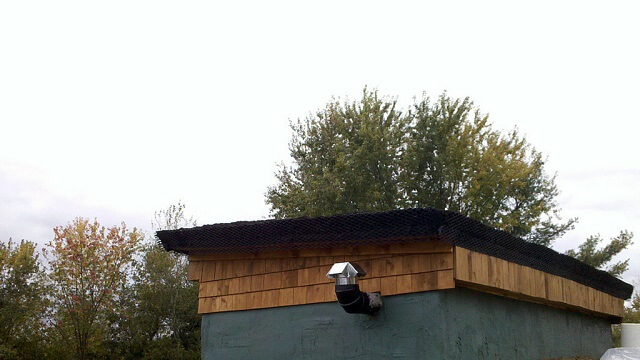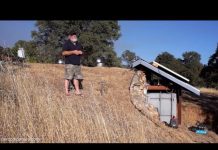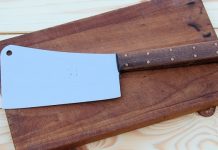When we started building our home one thing that was on my priority list was a backyard smoker. Since we were raising our own animals it only made sense that we have the ability to smoke our meats, chickens, and cheeses. Our other option would be to have our butcher smoke our meats for us and that just didn’t make much sense financially. So one year I decided to build our version of DIY backyard smoker and you can see a brief overview on how we did it below.
Pick your build spot, a corner of a shed works

Frame out the walls of the smoker

Cover with left over pine scraps

Use scrap T-111 for doors

Apply whatever stain you like

Use 2×4’s to keep the doors closed

Drill holes in 2×4’s

Rip them in half

Install in smoker and use dowels as racks

A propane stove works great for a smoke source

Pipe your smoke source into the box

Vent the smoker outside

And fire it up

There are certain safety precautions you should take when smoking meats especially if you are using curing salts in your recipes. Stay safe.
“You do need to handle it with care because it’s toxic if you ingest it directly. It’s colored pink to prevent accidental ingestion. Keep it out of kids’ reach. According to this link on Oxford University’s site, the exact toxicity is 71 milligrams per kilogram. I weigh nearly 100 kilograms. That means if I ate 7.1 grams, it could kill me (by binding the oxygen carried by my blood to the hemoglobin, making that oxygen unavailable to my cells). That’s about a teaspoon. If you’re a petite 110 pounds, 1/2 teaspoon would be toxic. This article on its toxicity suggest an even lower amount is harmful. Bottom line: Don’t be afraid of it, but keep it well identified, and use it only as a recipe calls for.” Source
Smoking Food: A Beginner’s Guide
In Smoking Food, Chris Dubbs and Dave Heberle assure us that smoking is an art, not a science, and they fearlessly reveal that art’s essentials—and how simple they can be. They explain how to choose the best fuels (you can use corncobs!), how to build smokers from old refrigerators and cardboard boxes, and, of course, how to smoke everything from turkeys to turtles. Their advice is as ingenious and cost-conscious as any given by Alton Brown. Aware of the needs and wants of the modern cook, they include low-sodium preparations, alternatives to preservatives like sodium nitrite, and thoughts on safely handling meat.







[…] DIY Backyard Smoker […]
[…] Build a smoker […]
[…] Smoked Paprika could be used if you do not have a smoker […]